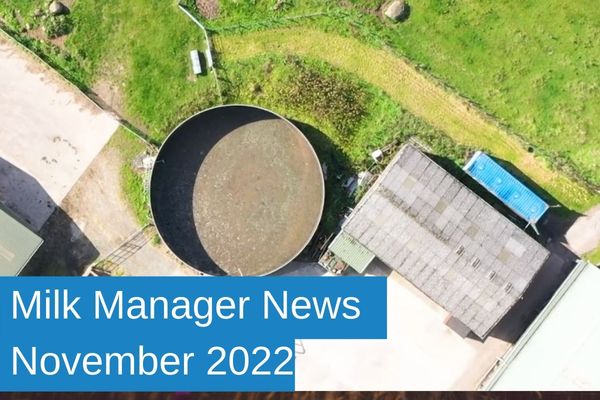Milk Manager News November 2022 – Upcoming Options For Steading Developments
14 November 2022Readers of Milk Manager News will be accustomed to me waxing lyrically over the environmental options available to the sector and how farms can make best use of these. In the shadow of another round of the Agri-Environment Climate Scheme (AECS), I thought it might be worthwhile looking at the funding available for those businesses that cannot target conservation outcomes at field level but can make changes at steading level.
Since the launch of the scheme back in 2015, Scottish Government has made provisions for a series of options aimed specifically at mitigating pollution and the protection of the water environment. For many, these provisions have really only meant one thing: slurry storage, be that a tower or lagoon. In addition to slurry storage support, the scheme does offer limited support for options around managing water quality and flood risk.
In most applications relating to this scheme, farmers and landowners are required to provide a farm environment map, outlining the various habitats and features of interest on and around the farm. This is normally followed up with a management map of some kind, which lays out which field scale management options a business is opting into. When applicants target steading drainage, the emphasis changes somewhat, and applications are judged less on the perceived scale of delivery and nature conservation benefits (though in some cases these are still relevant), to mitigation of pollution issues, namely the separation of dirty and clean water.
Farmers preparing this kind of application instead provide assessors with a farm steading assessment and farm steading management map, indicating where the various options will be located in relation to dirty and clean water.
In terms of funding options available, you might remember an article some months ago about constructed farm wetlands. These are very much still a thing but included with these is funding support for:
- Protected riparian/water margins
- Provision of support for new gates and relocation of existing ones
- Grass swales
- Ponds
- Sediment traps and bunds
- Alternative watering
- Hardstanding for gateways and feed sites
- Livestock tracks
- Livestock crossings
- Irrigation lagoons
In practical terms, the most appealing thing about AECS in a steading context is probably funding for concrete through the management option Managing Steading Drainage and Rural Sustainable Drainage Systems, though care must be taken to remain on the right side of the option eligibility. The option funds up to £10,000 towards the cost of concrete, where it is linked to another option (swales, ponds, wetlands, sediment traps) and could be used to channel and separate clean water from dirty. In that regard it is complimentary to recent efforts to increase slurry storage capacity and use of precision application methods.
This last round of AECS funding has been incredibly challenging for many and the bar on value for money continues to rise year-on-year. However, with increasing interest in concepts like natural capital and changes phased in with the amendments to the Water Environment (Controlled Activities) (Scotland) Regulations 2011 now could be just the time to take stock of how water is managed on your farm steading.
Preparing and developing an AECS application up to the point of submission and even beyond requires significant input from farmer and advisor, so those interested in looking at their funding options should get in touch as soon as possible. With all applications focusing on the farmed water environment, early engagement with SEPA is also recommended, as well as input from initiatives like Farming & Water Scotland.
alexander.pirie@sac.co.uk; 01292 525036
Sign up to the FAS newsletter
Receive updates on news, events and publications from Scotland’s Farm Advisory Service

